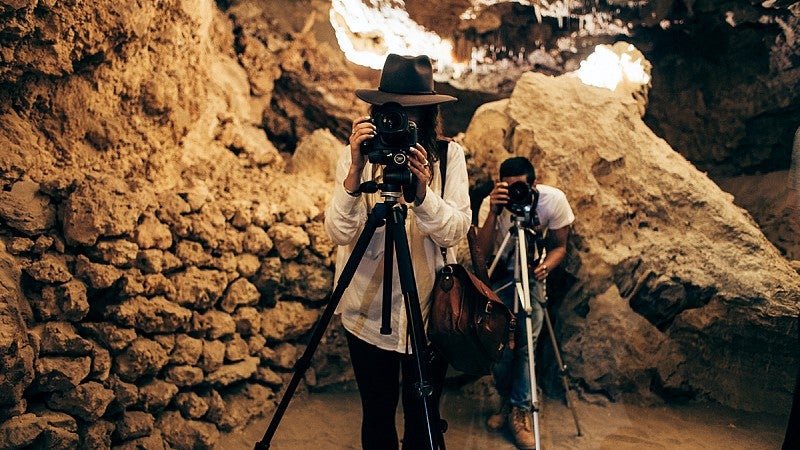
Editor’s note: This post is the first in an ongoing series of student opinion pieces about issues in communication ethics. Check back on the #LifeasaJStudent Blog for future posts in the series. Know of a journalist or news organization that made ethical decisions while publishing a story in 2020? Nominate them by February 15 for the Ancil Payne Award for Ethics in Journalism.
Last year we witnessed a shift across America as our nation was forced to face America’s racist, sexist and socially unjust roots rotting underneath the country’s soil. Journalists and news media captured this change as the industry continues to shift toward solutions journalism. The dynamic between the news media and science is complex and rooted in a long history of inequality.
On July 28th, 1996, college students Will Thomas and Dave Deacy stumbled upon part of a skull in the Columbia River’s embankment in Kennewick, Washington. The young men could never have guessed their discovery would result in two decades of political conflict, legal debate, ethical damage and extensive archaeological findings.
Soon after the discovery, five Native American tribes — the Confederated Tribes of the Umatilla Indian Reservation, the Confederated Tribes of the Colville Reservation, the Wanapum, the Yakama Nation, and the Nez Perce — in the Columbia River Basin claimed the Kennewick Man as an indigenous ancestor. They called him the “Ancient One.”
Many archaeologists argued it would be scientifically unjust to rebury the skeleton without examining it. Several scientists took the case to the U.S. Supreme Court.
After years of legal battles, the court sided with the scientists, and under strict time constraints and testing capabilities, they were allowed to examine the skeleton. They released their findings, and in 2017, those same tribes who fought for the remains were able to rebury them.
Scientific endeavors of the past are often linked to colonization efforts. Phrenology, a pseudoscience from the 19th century, provided a scientific ‘basis’ to classify people by race, intelligence and ancestry.
It became widely popular in the United States, especially at the turn of the century, “as a toolbox for the American Dream.” The American Phrenological Journal, started by two brothers in 1834, was one of the most widely read magazines in the nation. The continued use of science to justify inferiority or mystify ‘the other’ ensured the cycle of destructive research repeats itself.
Last year exposed another facet of America’s past that must be reconciled: the often abusive relationship between scientists and Native Americans.
It isn’t fair to compare contemporary American science to 19th-century practices. Scientists are making strides to build a symbiotic relationship between themselves and Native American tribes connected to archaeological findings. In 1990, the United States passed the Native American Graves Protection and Repatriation Act. This law acknowledged that remains and cultural items belong to the tribes first.
How, then, may journalism be a useful tool to help in this reconciliation and repatriation? When the Kennewick Man story was released, there was minimal coverage about the tribes involved and the implications this discovery has for all parties involved.
In 2014, Douglas Preston wrote a long story about the case and the archaeological findings in the Smithsonian Magazine. Preston titled it, “The Kennewick Man Finally Freed to Share His Secrets,” as if the Native American tribes involved were keeping their “Ancient One” from being “free.”
He interviewed one of the scientists involved, who happened to work for the Smithsonian. Preston barely touched on the tribes’ perspective. He wrote a piece that handily swayed its readers toward the side of science, which I believe robs us from learning from this situation at all.
In what ways can we, the journalists, use our work to promote advocacy and inclusion into the field of archaeology? In the Kennewick Man case, I believe that the ethical choice is to get all sides of the story. Native Americans have been left out of conversations about their history for hundreds of years. Their voices must be part of the narrative.
The ethical codes in journalism and archaeology share many similarities: the work is for the public's benefit, and the goal is preservation and conservation. Through stories and advocacy, journalists can be a part of preserving cultures in America that matter as much to the country’s history as those who came later.
— By Shannon Golden, class of ’22
Shannon Golden, class of ’22, is a journalism major in the SOJC. She is minoring in global studies and is particularly interested in international journalism. Golden currently works as a student writer for the SOJC Communication Team and Ethos Magazine.
Know of a journalist or news organization that faced an ethical dilemma while publishing a story in 2020? Nominate them by Feb. 15 for the SOJC's 2021 Ancil Payne Award for Ethics in Journalism. This year’s 21st-anniversary winner will receive a $10,000 prize.
